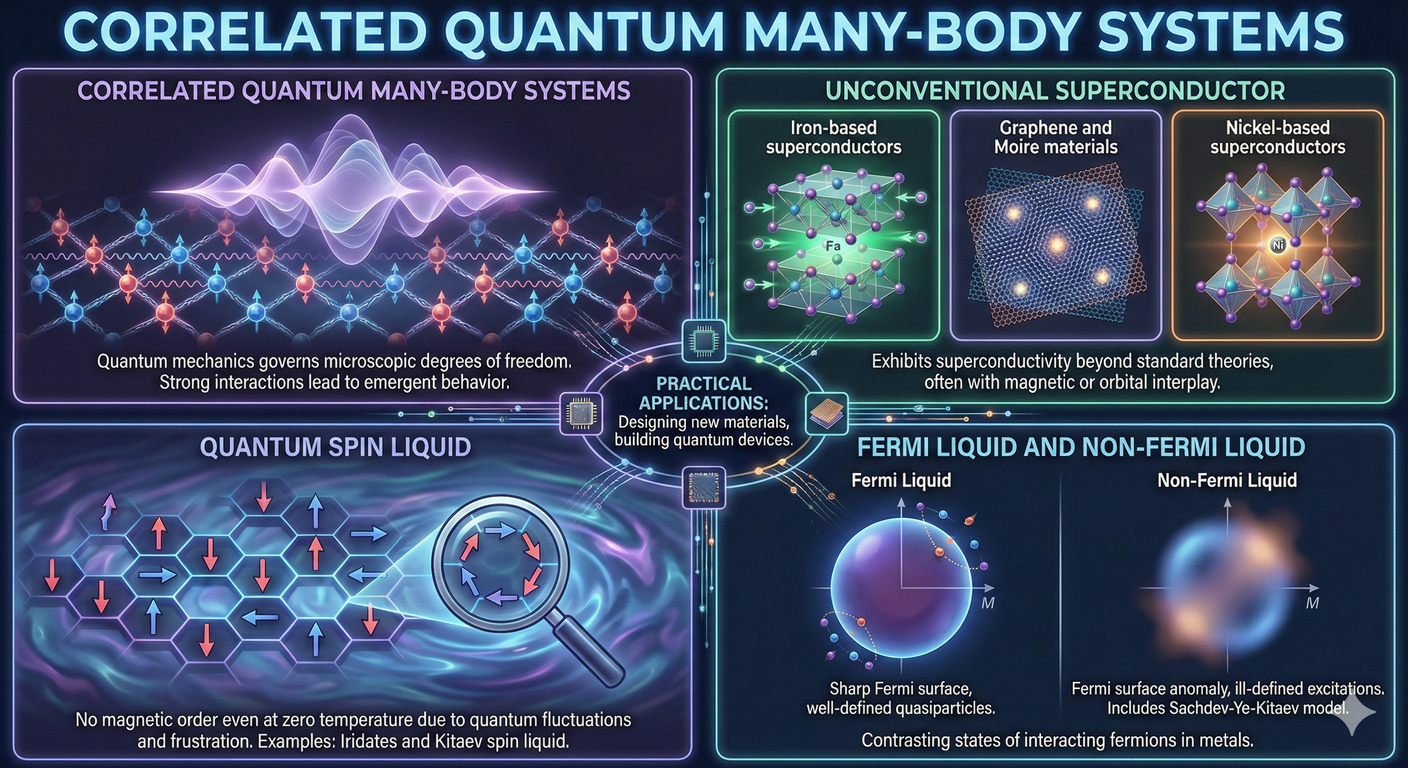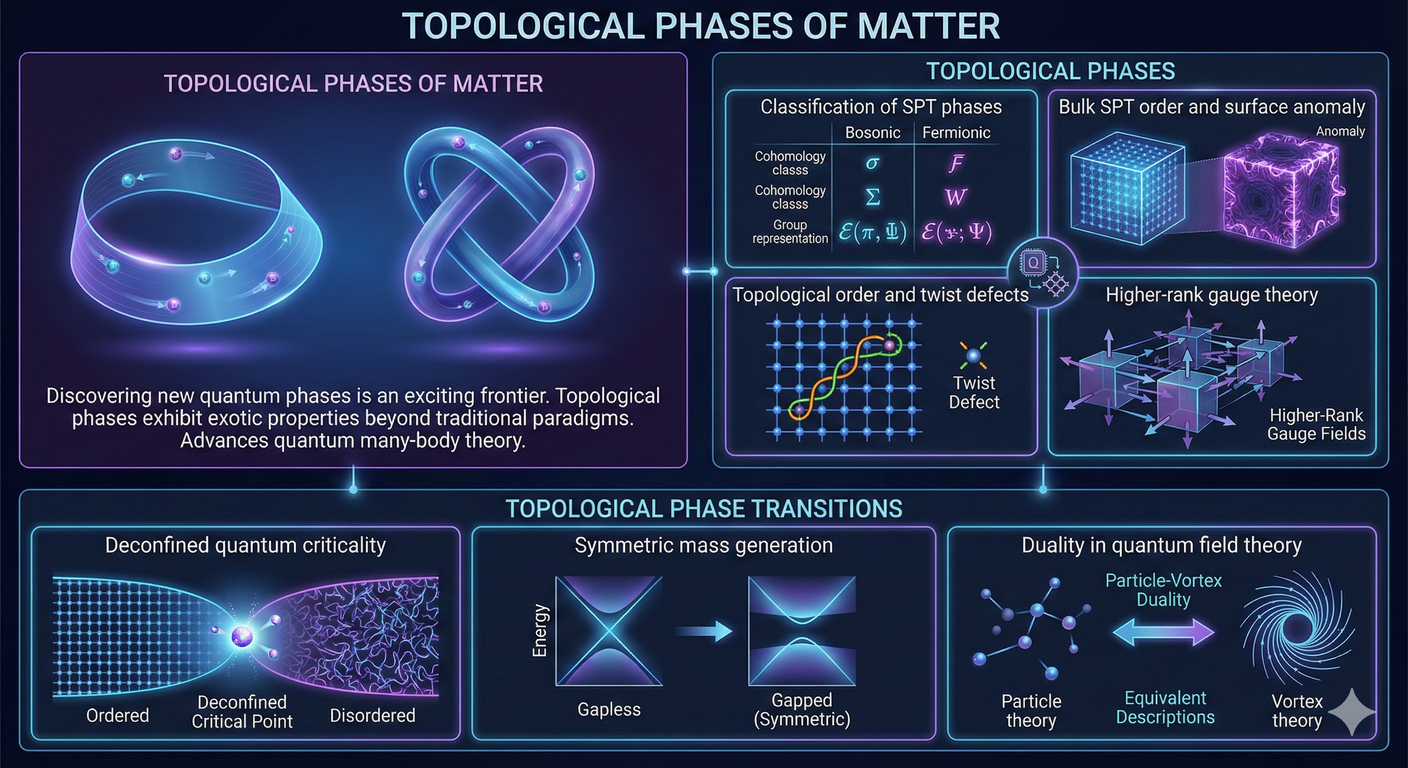Correlated Quantum Many-Body Systems
Quantum mechanics governs the microscopic degrees of freedom of electrons and spins. When strongly interacting, these systems can exhibit exotic collective phenomena beyond the simple sum of individual behaviors. Studying quantum many-body systems has important practical applications, from designing new materials to building quantum devices.

Unconvensional Superconductor
-
Iron-based superconductors
Quantum Spin Liquid
- Iridates and Kitaev spin liquid
Fermi Liquid and Non-Fermi Liquid
-
Sachdev-Ye-Kitaev model
Topological Phases of Matter
Discovering new quantum phases is an exciting frontier of condensed matter physics. Topological phases exhibit exotic properties beyond traditional paradigms. Studying them has advanced quantum many-body theory and may enable new experimental realizations.

Topological Phases
-
Classification of bosonic and fermionic SPT phases
-
Bulk SPT order and surface anomaly
-
Topological order and twist defects
-
Higher-rank gauge theory
Topological Phase Transitions
-
Duality in quantum field theory
Quantum Information Dynamics
Quantum entanglement connects topics of topological order, localization, and quantum chaos. It shares similarities with wormholes, motivating holographic duality ideas. Understanding entanglement structure and dynamics may provide insights into fundamental questions of decoherence, thermalization, and gravity.

Many-Body Localization (MBL)
- Spectrum bifurcation renormalization group
Random Quantum Circuits and Measurements
-
Measurement-induced entanglement transition
Structure and Dynamics of Entanglement
Machine Learning and Physics
Artificial intelligence is influencing all scientific fields, including physics. Physicists are also providing insights into the nature of intelligence. The combination of machine learning and physics is just beginning, with much potential still to be explored.
